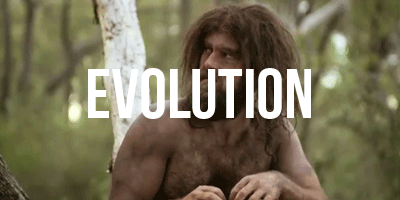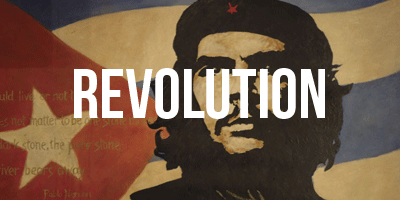Types of change management for organisations

Organisations, just like individuals, experience different types of change management. As suggested elsewhere, at one level organisational change is the sum of all the changes experienced by all the individuals in the organisation. At another, there is an emergent property to the change. It is as if, through aggregation, the change mechanism has taken on additional characteristics.
Types of change management for organisations
Organisational change is therefore a slippery concept. Its meaning tends to metamorphose leading to confusion over how to manage it as the different types of change are confused with one another. People – senior managers and others in a company – may expect strange things from change agents, change managers and change leaders when the boundary between one type of change and another is crossed.
It is here that our classification, and the potential for clarity that it offers, provides some assistance. The three types of change management that organisations face are:


Evolutionary change management – The most common types of change management experienced by organisations by far is evolutionary change. Evolutionary change has been around since organisations of people formed. It is called evolutionary change, because it arises through the process of natural selection: it is inevitable when small variations in performance, tiny adjustments or shifts in response by people and groups occur in a changing environment. Some results from this type of change will be random and minor; some tend to accumulate as a continuous series of often minute impacts that alter what people do, how organisations respond, and with whom, in a gradual manner. As with biological evolution, most changes are too small to notice, though when reflected on later, the distance travelled may be remarkable.
However, whilst potentially organisationally desirable, this form of change is so organic and steady that it doesn’t tend to lend itself to P3M styles of management. Indeed, there is a valid challenge as to whether it is a ‘managed’ process at all.

Revolutionary change management – A second type of change is revolutionary change. Revolutionary change has also been around for a long time, and it is usually experienced when organisations have change forced on them by external forces – sometimes welcome, mostly not. This type of change is typically accompanied by large power shifts, and on occasion the impact may be catastrophic.
As revolutionary change is essentially ‘force majeure’ and may be addressed by definable tactical solutions, it may be susceptible to organisation into, and management by, P3M constructs but it is, as the name suggests, not generally voluntary or planned change.

Directed change management – The third type of change management is called ‘directed’, ‘managed’, or ‘planned’ change. Achieving this type of change happen involves moving the management and work force and the organisational culture into alignment with the strategies, structure, processes and systems to achieve the desired state (vision).
This is the domain of P3M and the sub-types of ‘directed’ change management have a direct bearing on the way it needs to be managed. Understanding this can be a real relief to both the sponsorship and delivery tiers of an organisation. Equally, because ‘directed’ change management is both voluntary and deliberate it is entirely susceptible to management through P3M approaches.
Types of Directed Change
Within directed change there are three different sub-types of change management: developmental, transitional, and transformational. It is important to recognise this as the different kinds of change require different strategies and plans to gain engagement, reduce resistance, and ease acceptance.

Developmental change management – In its simplest form, a directed change can take the form of developmental change. In this the business improves what it is currently doing: improving existing skills, processes, methods, performance standards or conditions are all developmental changes. Examples are; increasing sales or quality, interpersonal communication training, simple work process improvements, team development and problem-solving efforts. These are classic examples of continuous improvement, quality circle driven changes, and ‘enhancement’ projects.
The most effective options for management here are either, containing it within a business as usual environment, or establishing a clear project.

Transitional change management – A second form of directed change- transitional change – leads to the replacement of what already exists with something different that is regarded as ‘new’ by the people involved. For the change to happen individuals have to emotionally let go of the old way of operating, leading to the need for the organisation having to dismantle the old while the new state is being put into place. In transitional change the final destination can be completely visualised and in great detail before the transition. This means that this type of change is an ideal candidate for being delivered through a project and traditional types of change management tools, as the people are largely impacted at the level of skills and actions, with the deeper-lying cultural values barely affected. Examples are re-organisations, simple acquisitions, creation of new products or services that replace old ones, and IT implementations that do not require significant shifts in culture or behaviour.

Transformational change management – A third, and far more challenging type of change is called transformational change. In this, the future state though part of the vision of the future is not, and cannot, be known in detail – much of the final state arises from evolutions. This change can seem to be the outcome of trial-and-error as new information; new boundaries and new interactions are integrated. It is largely for this reason that programmes and programme management disciplines were developed. Unlike projects that require predetermined outputs and outcomes and a linear trajectory of activity defined within a bounded plan, programmes are designed to deal with ambiguity and to unfold a tranche at a time. As with delivery so with adoption of the change – though a vision and a strategy are fundamental, the actual change process, the sequence and content and timing of changes will be determined less by planning and more by the rates at which the underlying beliefs and value systems change. Paradigm shift at the individual level is a valuable lever for achieving transformational change.
This is a much more unpredictable and scarier place than traditional projects and change planning is accustomed to working in. Emotion as well as intellect will determine success; in transformational change there is no one-for-one mapping between the current and future state. So, a step change involving mindsets and behaviours, as well as influence and new relationships has to be made by executives, managers and front-line workers alike. The future under this type of change is invented rather than inhabited, with leaders and workers changing their global viewpoint to make the required future, let alone operate in it. Examples are: complex mergers and acquisitions, the transformation of traditional channels of business to virtual and electronically-mediated one, and radical rebranding.
Because, for success, it depends on the development of a new belief for the organisation this type of change is unlikely to succeed unless it is effectively managed within the parameters of a change programme.
Summary
Most change in organisations is either developmental or transitional change, and, though important, without the shifts of mind and culture, the implementation of radically different structures, systems, processes or technology it rarely produces the anticipated return on investment. Many large IT implementations are styled as transitional, but they fail because to get the true value requires a mindset and culture change, it requires people to share information across boundaries, or alters the power bases between groups: and this just does not occur.
In short, the challenge of achieving a significant level of paradigm change at the individual level becomes an even more pressing change management need, and it is the capability to achieve that which many organisations lack.
Do you agree with the types of change management we have identified, and do your change initiatives fall into these types? Or do you have another type you would like to identify?


